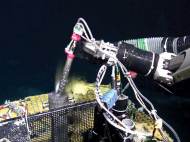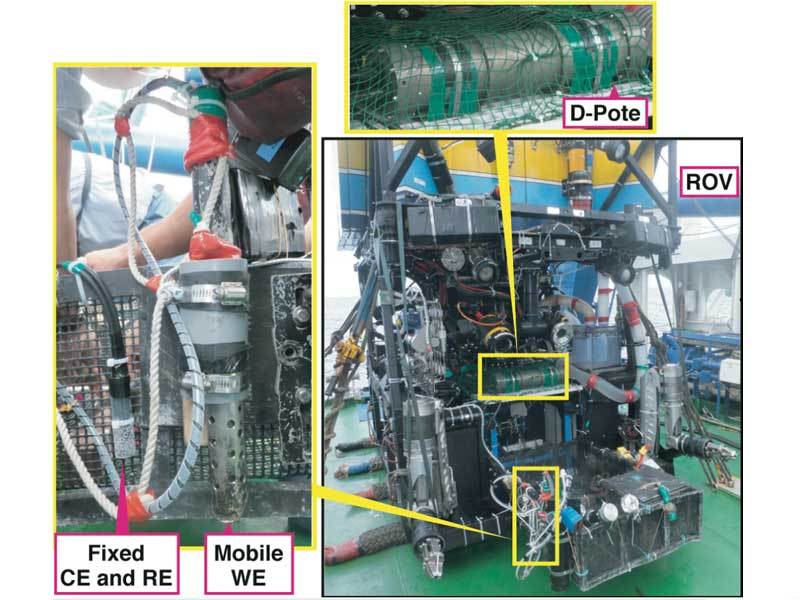Using natural hydrothermal vents as deep-sea batteries
 Collaboration between researchers at the RIKEN Institute, Japan Agency for Marine-Earth Science, and University of Tokyo resulted in development of a robust robotic system that uses natural hydrothermal vents on the sea floor to generate electricity. This novel system is simple and corrosion-resistant, and it could be used to revolutionize ocean exploration and improve our knowledge of deep sea ecosystems.
Collaboration between researchers at the RIKEN Institute, Japan Agency for Marine-Earth Science, and University of Tokyo resulted in development of a robust robotic system that uses natural hydrothermal vents on the sea floor to generate electricity. This novel system is simple and corrosion-resistant, and it could be used to revolutionize ocean exploration and improve our knowledge of deep sea ecosystems.
Ninety five percent of the ocean remains unexplored, unseen by human eyes. Exploring the deepest parts of the oceans presents huge technical challenges, as researchers must be provided with constant supplies of power and oxygen while being at great depth. Many problems could be solved if there were some inexpensive and efficient ways to deliver electrical energy to machines while at depth.
Novel robotic system inserts an electrode into hydrothermal fluid released from deep-sea vents in order to generate electricity. Hydrothermal fluid is enriched with anions or electron-rich ions, while seawater contains cations or electron-depleted ions. Robot places one electrode in the hydrothermal fluid, while the other is placed in the nearby seawater in order to create a chemical gradient that produces electrical current.
The system was tested at a natural hydrothermal vent as well as at an artificial vent drilled during the Integrated Ocean Drilling Program – an international effort to study the world’s seabeds. The robot was carried by the remotely operated vehicle Hyper-Dolphin. At both vents, the robotic system generated sufficient power to illuminate three light-emitting diodes (LEDs).
“This is the first demonstration of an electrochemical fuel cell at a hydrothermal vent. Previous attempts have been made based on the difference in temperature between the hydrothermal fluid and seawater, by thermoelectric conversion. Our method is more efficient thanks to special electrodes we made from an iridium-coated titanium mesh that resists corrosion”, said Ryuhei Nakamura, researcher at RIKEN Center for Sustainable Resource Science.
Mentioned electrochemical fuel cell has a platinum-coated titanium mesh board used as the cathode. The anode is made of a titanium pipe in which five pieces of iridium-coated titanium mesh boards are fitted. A titanium board is welded to the outer surface of the titanium pipe as a grip for the manipulator. Cathode and anode are connected to deep-sea potentiostat system (D-Pote) or LEDs through sealed underwater cables.
According to the RIKEN researchers, the chemicals in the hydrothermal fluid are completely used as reductants for the fuel cell, making the theoretical maximum power generation of 2.6 kW.
Aside benefiting deep-ocean science on a practical level, the new technology could improve our understanding of how biological ecosystems exploit energy sources in such extreme environments.
For more information, you can read the article published in the journal Angewandte Chemie International Edition: “Generation of electricity and illumination by an environmental fuel cell in deep-sea hydrothermal vents” [1.2MB PDF].










Leave your response!